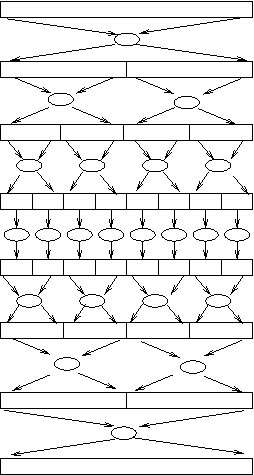OpenCL is a standard API for accessing, especially, the GPU for doing general purpose computing in a program (not necessarily graphics related). However, the OpenCL can be used for accessing other specialized co-processors and even the CPU itself.
OpenCL is a standard developped by the Khronos group. It is similar to the CUDA, developped by NVIDIA for similar purposes; however, OpenCL is implemented on a wider variety of hardware.
The executable is linked against a (device-independent) library (OpenCL library).
At run-time, the OpenCL library must be able to find the driver(s) for the hardware on the execution machine.
There is code that executes on the host machine, and code that executes on the OpenCL device (normally the GPU).
The code executing on the host can be written in any language; OpenCL provides a C API, but a C++ wrapper is available, and also bindings for other languages.
The code executing on the OpenCL device must be written in C, with some extensions and with some restrictions.
The main code (the code executing on the host) normally does the following things:
The code on the device is launched in multiple instances (somewhat like distinct processes or threads). The instances are called work items. Each work item can retrieve its work item ID and use it to decide which part of the work it is supposed to perform.
Work items are grouped in work groups. Within a work group, the work items can synchronize and can access the so-called local memory. No synchronization is possible among work items in different work groups.
The memory available to the code on the device is divided into:
The host API has an operation allowing to launch a specified number of work groups, each consisting in a specified number of work items.
The operations requested by the host code — memory transfer and work item executions — are placed in a queue. The host API allows to request enqueueing of such an operation.
To synchronize operations, each operation has an associated event, that gets signalled when the operation completes. It is possible:
Matrix product: opencl-matrix-mul.cpp
Compute the sum of the prefixes (out[k]=in[0]+in[1]+...+in[k]): opencl-prefix-sum.cpp . This also demonstrates how to use local memory and working group barriers.
There are important limitations on what a kernel can do. Most importantly, GPU code cannot be recursive.
Problem: how can we do the recursive split and combine steps?
Solution: do the splits and combines in stages, and make the host code aware of the number of necessary instances and make it drive the split operations and combine operations. See opencl-bin-sum.cpp and opencl-mergesort.cpp
 Radu-Lucian LUPŞA
Radu-Lucian LUPŞA